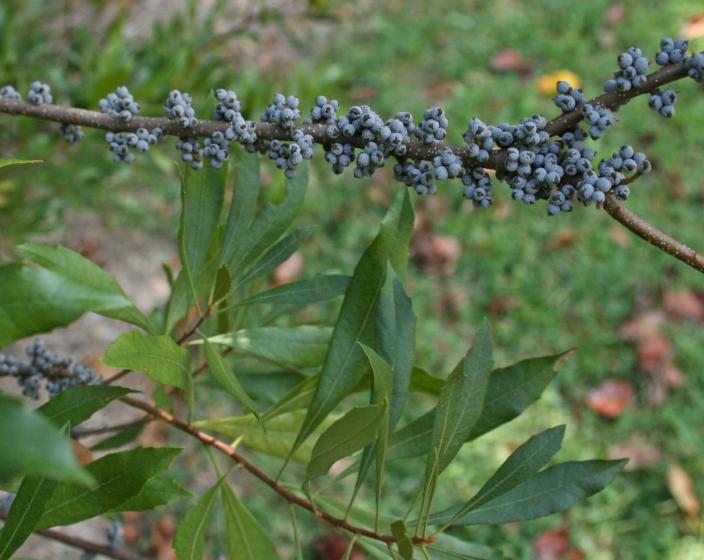By Kathy Van Mullekom
Every time I move, I create my all-time favorite garden. Each is different and memorable.
First, there was the woodsy shade garden with camellias, azaleas, ferns and Japanese maples. Large-cupped, yellow Carlton daffodils emerged early spring under deciduous trees before they leafed out, and violet-flowering, cold- hardy geraniums (Geranium Rozanne) popped with summer color.
My next garden was totally the opposite – full-sun days called for roses, ornamental grasses and perennials. Black and Blue Salvia, milkweed, Joe-pye weed and coneflowers attracted bees, birds and butterflies, while Knock Out roses charmed the days with never-ending rosy-red and pink hues.
In both gardens, evergreens such as wax myrtle, eastern red cedars and arborvitae gave the gardens good “bones.”
At my newest garden, a retirement home in Virginia Beach, I’m establishing a “memory garden” that reminds me of those two long-loved gardens.
Ken and I cleared a small wooded area at the back of our grassy lawn. There, we planted three eastern red cedars, three Yuletide camellias, three wax myrtles and a couple hundred Carlton daffodils. I always plant in odd numbers, placing them in triangular or slightly staggered formations – much like floral arrangers do.
Our former gardens also featured numerous bird feeders, so our Virginia Beach site does, too.
Native eastern red cedar produces blue fruits in summer that birds feast on in winter. The large shrub, or small tree, grows 15 to 20 feet tall, with blue-green foliage that provides nesting sites and predatory protection for songbirds. The plant grows in full sun or dappled shade. During the holidays, bring in fragrant branches of the cedar to give your home fresh scents.
Wax myrtle is one of the most versatile home garden plants you can use. A large shrub or small tree, its lower and interior branches can be removed to show off its interesting branch structure. Planted closely together, wax myrtle makes a showy hedge that can grow naturally or sheared to shape. The native evergreen features soft, olive-green foliage with a spicy odor that repels insects and deer, according to gardening professionals. It grows in sun or shade, and wet or dry soil. In April, teeny flowers appear on male and female plants, but the females produce blue-gray fruits that birds love to eat August through October.
Yuletide is my all-time favorite camellia for several reasons: it stays relatively small, and flowers a holiday red at just the right time of the year, Thanksgiving to Christmastime. Its flowers are small but showy enough to brighten up a wooded area. The blossoms can be cut for holiday arrangements, and look stunning just floating in a pretty bowl of water. Camellias can be pruned immediately after they finish flowering, removing crossing and rubbing branches to allow air and light to infiltrate the plant and thereby reduce the possibility of disease and pests.
In addition, my memory garden contains nandinas to honor my grandparents who loved and grew them, as well as my favored Nikko blue-flowering hydrangeas.
Now, when I sit on my new paver patio and look toward the woods, I am reminded all the goodness gardening has brought into my life – yesterday, today and forever.
Kathy Van Mullekom gardens in southeastern Virginia Beach; contact her at kvanmullekom@aol.com

